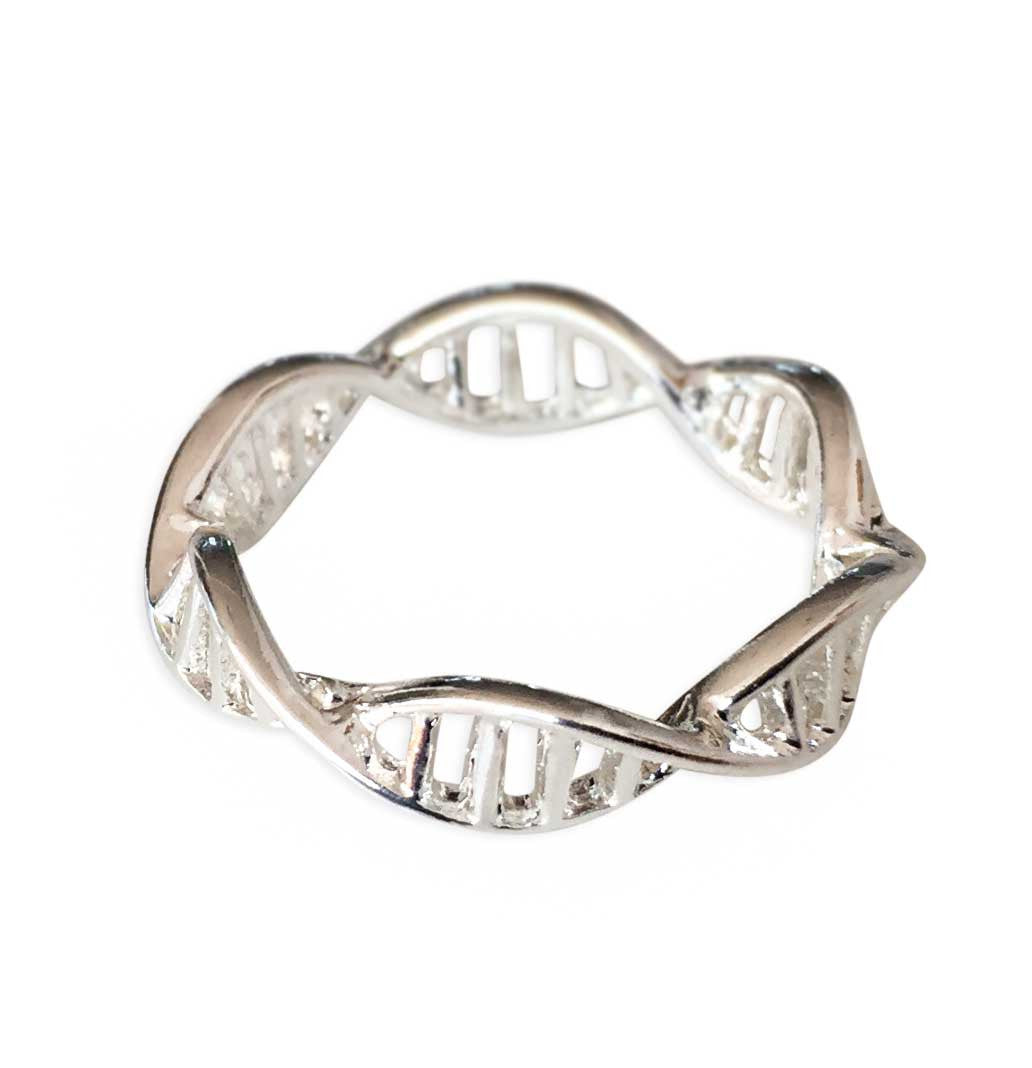
Gregor Mendel with an illustration of the peas he studied. Hereditary traits are passed on in discrete units. This was in contrast to the prevailing concept at the time, which suggested that parental traits intermingle and blend with each other, with the offspring constituting an average of sorts of their parents' traits.The discrete units discovered by Mendel would later be called genes. In 1865, he published his observations and determined that hereditary traits, such as the color and shape of peas, are passed on in discrete units, such that an offspring shares some traits with the mother and some with the father. There, the monk Gregor Mendel grew pea plants, created hybrids between several varieties, and followed the results for several generations. Thomas Monastery in the city of Brno in Bohemia. The first step in the genetic path took place in the courtyard of the St. It was only a few years prior to the discovery of the double helix that these paths began to converge, ultimately paving the way for the groundbreaking discovery On the Shoulders of Giants Two of the paths emerged already in the mid-19th century, while the third emerged at the beginning of the 20th century. Three separate paths led to the revolutionary discovery of the double helical structure of DNA. This revolutionary discovery constituted one of the most profound breakthroughs of the 20th century, and of science in general, as it revealed the structure of the fundamental molecule that contains the hereditary material of most living organisms in our world. The article, only one and a half pages in length, presented for the first time the three-dimensional structure of DNA - the molecule that carries the genetic material of most living organisms on our planet - revealing it to be a double helix.

It marked the birth of the field of molecular genetics, which came into being with the publication of a concise research paper by Francis Crick and James Watson in the esteemed scientific journal Nature.
DOUBLE HELIX HOW TO
Read more about how to correctly acknowledge RSC content.April 25, 1953, was a date of great significance in the history of science. Permission is not required) please go to the Copyright

If you want to reproduce the wholeĪrticle in a third-party commercial publication (excluding your thesis/dissertation for which If you are the author of this article, you do not need to request permission to reproduce figuresĪnd diagrams provided correct acknowledgement is given. Provided correct acknowledgement is given. If you are an author contributing to an RSC publication, you do not need to request permission Please go to the Copyright Clearance Center request page. To request permission to reproduce material from this article in a commercial publication, Provided that the correct acknowledgement is given and it is not used for commercial purposes.

This article in other publications, without requesting further permission from the RSC, Comotti,Ĭreative Commons Attribution-NonCommercial 3.0 Unported Licence. The peculiar sorption performances and the extraordinary thermal stability up to 450 ☌, combined with the ease of preparation and regeneration, highlight the perspective of applying these materials for selective removal of CO 2 from other gases.Ī double helix of opposite charges to form channels with unique CO 2 selectivity and dynamics The unusual dynamics with a single-file transport rate of more than 10 6 steps per second and an energy barrier for the jump to the next site as low as 2.9 kcal mol −1 was revealed unconventionally by complementing in situ 13C NMR anisotropic line-shape analysis with DFT modelling of CO 2 diffusing in the crystal channels. The unique screwing dynamics of CO 2 travelling along the ultramicropores with a step-wise reorientation mechanism was driven by specific host–guest interactions encountered along the helical track. The systematic electrostatic sites provided the perfectly fitting loci of complementary charges in the channels that proved to be extremely selective with respect to N 2 ( S = 690), a benchmark in the field of porous molecular materials. Guest recognition by electrostatic interactions remind us of the role played by the dipolar helical channels in regulatory biological membranes. The charged channels were consolidated by robust hydrogen bonds. Self-assembly of polyfunctional molecules containing multiple charges, namely, tetrahedral tetra-sulfonate anions and bifunctional linear cations, resulted in a permanently porous crystalline material exhibiting tailored sub-nanometer channels with double helices of electrostatic charges that governed the association and transport of CO 2 molecules. Porous molecular materials represent a new front in the endeavor to achieve high-performance sorptive properties and gas transport.


 0 kommentar(er)
0 kommentar(er)
